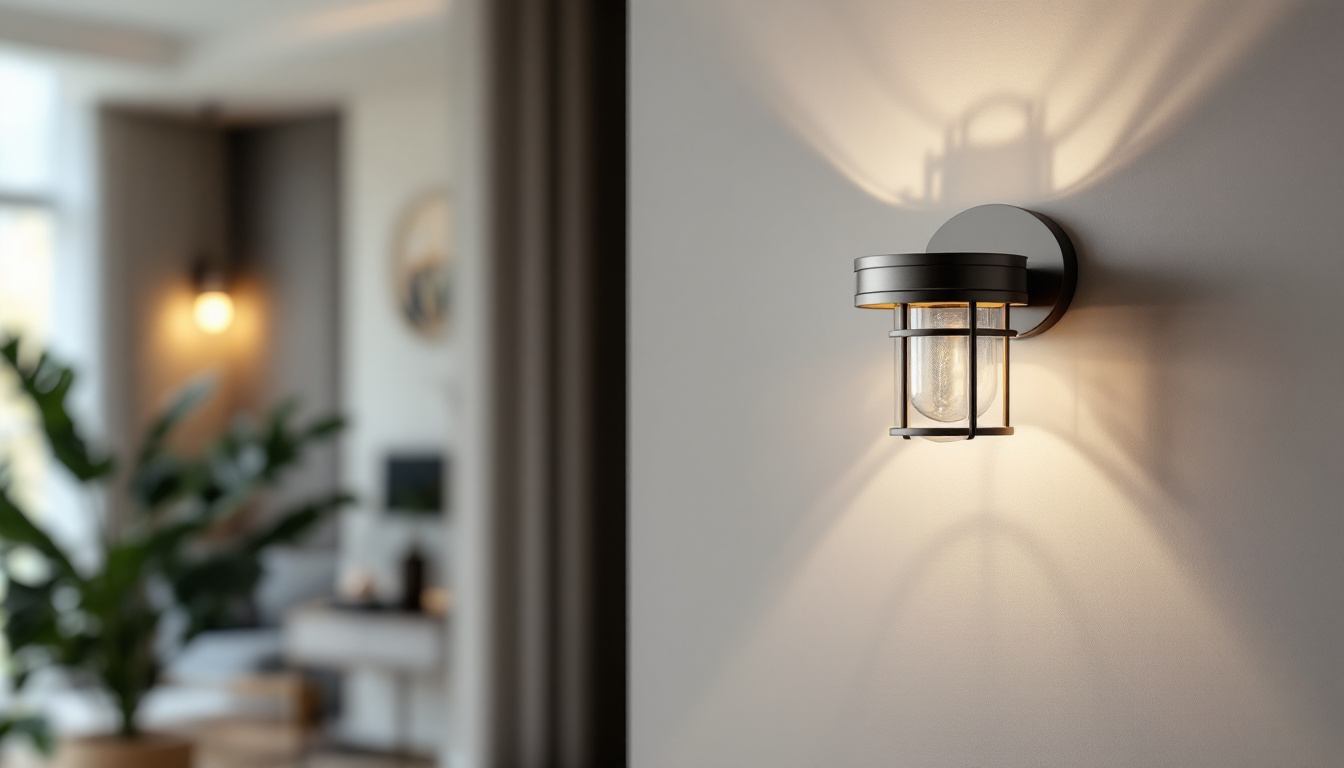
Lighting contractors play a crucial role in enhancing the ambiance and functionality of spaces through well-designed lighting solutions. Among the various fixtures available, fan light fixtures stand out for their dual purpose of providing illumination and cooling. However, the installation and selection of these fixtures can often lead to common mistakes that may compromise their effectiveness. This article delves into these pitfalls, offering insights to help lighting contractors avoid them and ensure successful installations.
Before diving into common mistakes, it is essential to grasp the fundamental aspects of fan light fixtures. These fixtures combine a ceiling fan with a light source, serving both aesthetic and practical functions. Proper understanding of their components, including the motor, blades, and light kit, is vital for effective installation. The dual purpose of these fixtures not only enhances the ambiance of a room but also contributes to energy savings by reducing the need for additional lighting sources. As such, they are an increasingly popular choice for homeowners looking to optimize their living spaces.
Fan light fixtures typically consist of several key components. The motor is the heart of the fan, responsible for its rotation and airflow. The blades, usually made from wood, plastic, or metal, determine the fan’s efficiency and style. The light kit, which can vary in design and brightness, is often an afterthought but plays a significant role in the overall functionality of the fixture. Additionally, the mounting system, whether flush-mounted or suspended, can greatly affect the fan’s performance and aesthetic appeal. Proper installation and alignment of these components are crucial for maximizing airflow and ensuring the longevity of the fixture.
There are various types of fan light fixtures available, each designed for specific applications. For instance, indoor fans are generally smaller and quieter, while outdoor models are built to withstand the elements. Additionally, some fixtures come with integrated smart technology, allowing for remote control and energy efficiency. Understanding these distinctions can significantly influence the selection process. Moreover, fans with reversible motors are particularly advantageous as they can change the direction of airflow, providing cool breezes in the summer and circulating warm air in the winter. This versatility not only enhances comfort but also contributes to energy savings throughout the year, making fan light fixtures a smart investment for any home.
Even experienced lighting contractors can make mistakes during the installation of fan light fixtures. These errors can lead to poor performance, safety hazards, and dissatisfied clients. Recognizing these common pitfalls is the first step toward ensuring a successful installation.
One of the most frequent mistakes is mounting the fan light fixture at an incorrect height. Ideally, the fan blades should be positioned 7 to 9 feet above the floor for optimal airflow and safety. If the fixture is mounted too high, it may not circulate air effectively, while mounting it too low can pose a risk of head injury.
Contractors should also consider the ceiling height when determining the mounting height. In rooms with vaulted ceilings, additional downrods may be necessary to achieve the ideal height. Ensuring proper clearance not only enhances functionality but also contributes to the overall aesthetic appeal of the space. Furthermore, the design of the room should be taken into account; for instance, in spaces with low ceilings, a flush mount fixture might be more appropriate to avoid any potential hazards while still providing adequate lighting and airflow.
Another common oversight is neglecting the weight of the fan light fixture. heavy fixtures require a secure mounting system to prevent accidents. Contractors should always check the weight specifications and ensure that the ceiling structure can support the fixture. Using inadequate mounting brackets or failing to secure the fixture properly can lead to catastrophic failures.
Additionally, it is crucial to consider the weight distribution of the fixture. Unevenly distributed weight can cause wobbling and noise during operation, detracting from the user experience. Proper installation techniques, including the use of appropriate anchors and brackets, can mitigate these issues. Beyond just the immediate installation, contractors should also educate clients on the importance of periodic checks and maintenance of the fixture, as wear and tear can alter its stability over time. Regular inspections can help identify potential issues before they escalate, ensuring that the fan light fixture remains both functional and safe for years to come.
Electrical errors are another area where lighting contractors often falter. Given the complexities of electrical systems, it is vital to adhere to safety standards and best practices during installation.
One of the most critical aspects of installing fan light fixtures is ensuring correct wiring connections. Mistakes in wiring can lead to malfunctioning fixtures, flickering lights, or even electrical fires. Contractors should always refer to the manufacturer’s wiring diagram and follow local electrical codes.
Moreover, it is essential to ensure that the power supply is turned off before beginning any electrical work. Failing to do so can result in serious injuries. Using wire connectors that are suitable for the fixture’s wattage and ensuring secure connections can prevent many common electrical issues.
In addition to following wiring diagrams, contractors should also consider the type of wire being used. Different types of wire, such as THHN or NM cable, have specific applications and limitations. Understanding the environment where the wiring will be installed—whether it’s in a damp basement or an attic—can influence the choice of wire insulation and gauge. This attention to detail not only enhances safety but also ensures longevity and reliability in the electrical system.
Another electrical mistake that contractors often make is overloading circuits. Each circuit has a specific load capacity, and exceeding this limit can lead to tripped breakers or electrical fires. Contractors should calculate the total wattage of all fixtures on a circuit and ensure it does not exceed the recommended limit.
In some cases, it may be necessary to install dedicated circuits for high-wattage fixtures or multiple fan light installations. This proactive approach not only enhances safety but also improves the overall performance of the lighting system.
Furthermore, it’s important to educate clients about the signs of circuit overload, such as warm outlets, flickering lights, or frequent breaker trips. Providing homeowners with this knowledge can empower them to monitor their electrical systems and address potential issues before they escalate. Additionally, incorporating energy-efficient lighting options, like LED fixtures, can significantly reduce the overall load on circuits, promoting both safety and energy conservation in residential and commercial spaces.
The selection of the appropriate fan light fixture is crucial for both aesthetics and functionality. Many contractors make the mistake of choosing fixtures based solely on appearance, neglecting other important factors.
One common error is failing to consider the size and style of the room when selecting a fan light fixture. A large fixture in a small room can overwhelm the space, while a small fixture in a large room may not provide adequate illumination. It is essential to strike a balance between size and style to achieve a harmonious look.
Additionally, the style of the fixture should complement the overall design of the room. Whether the space is modern, traditional, or eclectic, the chosen fixture should enhance the existing decor rather than clash with it. Taking the time to assess the room’s dimensions and style can lead to more satisfactory outcomes for clients.
In today’s environmentally conscious world, energy efficiency is more important than ever. Many contractors overlook this aspect when selecting fan light fixtures. Choosing fixtures with Energy Star ratings or LED light kits can significantly reduce energy consumption and lower utility bills for clients.
Moreover, energy-efficient fixtures often come with longer lifespans, reducing the need for replacements and maintenance. Contractors should prioritize energy efficiency not only for the benefit of their clients but also to align with current trends in sustainable design.
After installation, maintenance is a critical aspect that contractors should not overlook. Many clients are unaware of the necessary upkeep for their fan light fixtures, leading to performance issues over time.
Contractors should provide clients with clear maintenance guidelines to ensure the longevity and efficiency of their fixtures. This may include recommendations for cleaning the blades, checking for loose screws, and replacing bulbs as needed. Educating clients on the importance of regular maintenance can prevent many common issues and enhance their overall satisfaction.
Additionally, contractors can offer maintenance services or reminders to clients, creating an opportunity for ongoing business while ensuring that fixtures remain in optimal condition.
Another aspect of client education involves encouraging proper use of the fan light fixtures. Many users may not be aware of the best practices for operating ceiling fans, such as reversing the blade direction for seasonal changes. Providing this information can enhance the functionality of the fixture and improve the client’s experience.
Moreover, educating clients on the importance of using compatible light bulbs and avoiding overloading circuits can prevent potential issues down the line. A well-informed client is more likely to appreciate the value of their investment, leading to positive word-of-mouth referrals for the contractor.
In summary, the installation of fan light fixtures presents various challenges that lighting contractors must navigate. By understanding the common mistakes associated with installation, electrical connections, fixture selection, and maintenance, contractors can enhance their skills and deliver superior results to their clients.
Awareness of these pitfalls not only improves the quality of work but also fosters trust and satisfaction among clients. As the demand for stylish and functional lighting solutions continues to grow, contractors who prioritize best practices will undoubtedly stand out in the competitive landscape of the lighting industry.
Ultimately, a commitment to excellence in every aspect of the installation process will lead to lasting success and a solid reputation in the field of lighting design.
Don’t let common installation mistakes affect your lighting projects. Choose LumenWholesale for high-quality, spec-grade fan light fixtures at unbeatable wholesale prices. With our extensive selection that meets the highest industry standards, you can trust that you’re getting reliable, high-performance lighting every time. Plus, enjoy the convenience of bulk buying with free shipping and no hidden fees. Elevate your lighting installations with the perfect blend of quality, affordability, and convenience. Visit LumenWholesale now for the best value in wholesale lighting.

Illuminate your expertise with our comprehensive guide on house outdoor lights, tailored specifically for lighting contractors.

Discover how under counter lighting is revolutionizing the lighting industry with its blend of functionality and style.

Discover innovative cost-saving strategies for lighting contractors with tube LED lights.

Discover expert insights on LED sconce light fixtures with our comprehensive guide tailored for lighting contractors.